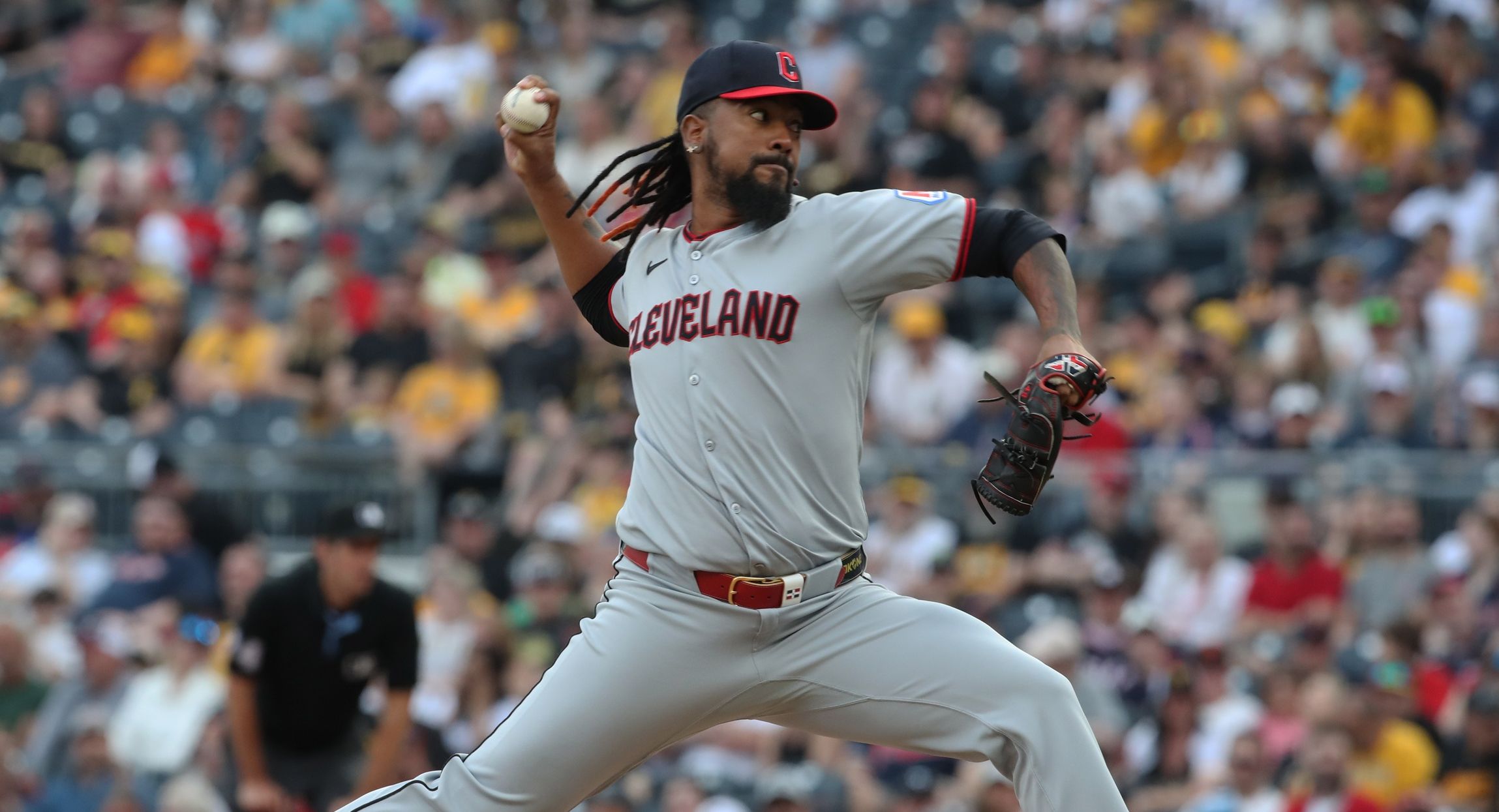
The ninth inning used to be a simple affair. Bring in your best arm, three outs later, handshakes all around. But baseball’s evolution has transformed the late innings into strategic battlegrounds where games are won and lost on the strength of relief corps. As the 2025 season approaches, bullpens have become the new frontier of competitive advantage – a chess match where velocity, spin rate, and nerve collide.
Today’s elite arms bear little resemblance to the mop-up men of yesteryear. Their usage is meticulously plotted by analytics departments calculating win probabilities down to decimal points. Yet for all the numbers, there remains something gloriously unpredictable about relief pitching – the human element that transforms simple throws into performances worthy of standing ovations or anguished groans.
10. Emmanuel Clase

The baseball world remains obsessed with radar gun readings, yet Cleveland’s closer reminds us that movement trumps miles per hour. Clase’s cutter behaves like a sentient being with a personal vendetta against bat barrels. It starts in one zip code and finishes in another, leaving hitters mumbling to themselves on the walk back.
Last season’s league-leading 47 saves only tell part of the story. More impressive is how Clase secured them – with machine-like efficiency that bordered on boring. His sub-1.00 WHIP and ground ball rate make him the closest thing to a sure bet in a role defined by volatility. In an era when many closers flame out quickly, Clase’s consistency feels revolutionary.
9. Mason Miller

Oakland’s fireball factory has produced arms before, but Miller exists in a different dimension. His fastball doesn’t just arrive at the plate; it appears there, seemingly skipping the intervening 60 feet, 6 inches. Watching Miller throw 103 mph with pinpoint control feels like witnessing something humans shouldn’t yet be capable of.
Miller’s strikeout rate approaches 15 per nine innings, with opposing batters managing just a .156 average. What separates him from other velocity merchants is his command – the ability to place these otherworldly pitches precisely where he wants them. The Athletics may not contend in 2025, but every Miller appearance becomes appointment viewing.
8. Edwin Diaz

Remember 2023? Mets fans sure do. The season their trumpets fell silent when Diaz’s injury left a crater-sized hole in their bullpen. His return to form represents both redemption and resurgence. Diaz throws fire but controls it with surprising delicacy, like a chef who knows exactly when to remove the pan from the flame.
His devastating changeup creates timing problems that even major league hitters can’t solve. When Diaz is right, the ninth inning at Citi Field transforms into performance art – a three-act drama that typically ends with batters returning to the dugout, heads down, contemplating career choices.
7. Ryan Helsley

The Cardinals have a tradition of developing relievers who outperform projections, but Helsley broke the mold along with the franchise record for saves. His 49 saves last season weren’t just impressive – they were historic. He compiled them not with smoke and mirrors, but with a sledgehammer approach that dares hitters to catch up.
His 100 mph fastball gets headlines, but baseball insiders rave about his slider – arriving at 91 mph yet moving like something thrown 10 mph slower. This velocity deception creates timing problems that even the game’s best hitters struggle to solve. Helsley has transformed from setup man to franchise cornerstone, proving that sometimes the best closer was in your bullpen all along.
6. Josh Hader

You know what doesn’t exist anymore? The LOOGY – that Left-Handed One Out GuY who specialized in retiring lefty batters. Hader made that specialist role obsolete by himself. His crossfire delivery creates angles that seem to violate the laws of physics. From the batter’s perspective, it’s less about hitting his pitches and more about surviving them.
His dominance against left-handed batters borders on unfair – they managed just a .133 average against him last season. What elevates Hader is his equal effectiveness against righties, who fare barely better despite the platoon advantage. The Astros have given him the ninth inning exclusively, abandoning the multi-inning role he once occupied.
5. Jhoan Duran

Minnesota’s bullpen behemoth throws what scouts have taken to calling a “splinker” – a pitch that combines the best attributes of a splitter and sinker. The result confounds hitters and physics professors alike. When paired with a fastball that routinely exceeds 100 mph, it creates an essentially unfair guessing game.
Duran’s emergence represents perfect timing for the Twins, who have assembled a competitive roster in a division very much up for grabs. His imposing 6’5″ frame and expressionless demeanor add to the intimidation factor. Hitters stepping in against Duran experience the baseball equivalent of seeing a “Beware of Dog” sign moments before hearing a deep growl from the other side of the fence.
4. Jeff Hoffman

Remember Hoffman? Former top-10 draft pick? Centerpiece of the Troy Tulowitzki trade? After years of frustration as a starter, he has transformed himself into one of baseball’s most reliable late-inning options. Toronto’s decision to hand him the closer role raised eyebrows initially, but those doubts evaporated faster than a hanging curveball at Coors Field.
His arsenal now features three distinct weapons – a riding four-seamer that tops out at 98, a diving splitter, and a slider that breaks late and sharp. This transformation represents years of tinkering, failing, adjusting, and finally succeeding. For players battling through career disappointments, Hoffman’s journey proves that baseball careers rarely follow straight lines.
3. Tanner Scott

Most power pitchers struggle with command throughout their careers. Scott finally conquered his control demons and emerged as an elite option. The trade that brought him to his current team initially seemed minor – now it looks like grand larceny. His electric fastball-slider combination generates enough electricity to power a small city.
Scott’s development reminds us that patience often pays dividends in player development – sometimes the final piece of the puzzle takes years to snap into place. Left-handed relievers who throw 98 mph don’t exactly grow on trees. His 15.3 strikeouts per nine innings ranked second among all relievers with at least 50 innings pitched last season.
2. Devin Williams

The baseball world first noticed Williams for his “Airbender” changeup – a pitch so unique it deserved its own patent. Now wearing Yankees pinstripes, Williams brings his carnival-worthy pitch arsenal to baseball’s biggest stage. His changeup doesn’t just fool hitters; it makes them question fundamental truths about pitch movement.
Williams’ transition to the Bronx represents one of baseball’s most fascinating experiments. His otherworldly stuff has never been in question, but performing under New York’s microscope presents a different challenge entirely. Early returns suggest he’s embracing the pressure rather than buckling under it. If he maintains his dominance here, he might finally receive the recognition his talents deserve.
1. Kirby Yates

Baseball careers rarely follow neat, predictable arcs, and Yates exemplifies the sport’s capricious nature. After bouncing between organizations and battling injuries that threatened to end his career, he rebuilt himself into one of the game’s most reliable late-inning options. His comeback story deserves recognition alongside his pitching achievements.
His signature splitter generates ground balls at a remarkable 62% rate, making him a manager’s dream in tight spots. While no longer throwing with the same velocity as his younger counterparts, Yates compensates with pinpoint control and advanced understanding of hitter tendencies. His .132 batting average against last season proves that guile and execution can still dominate in an era obsessed with raw stuff.



